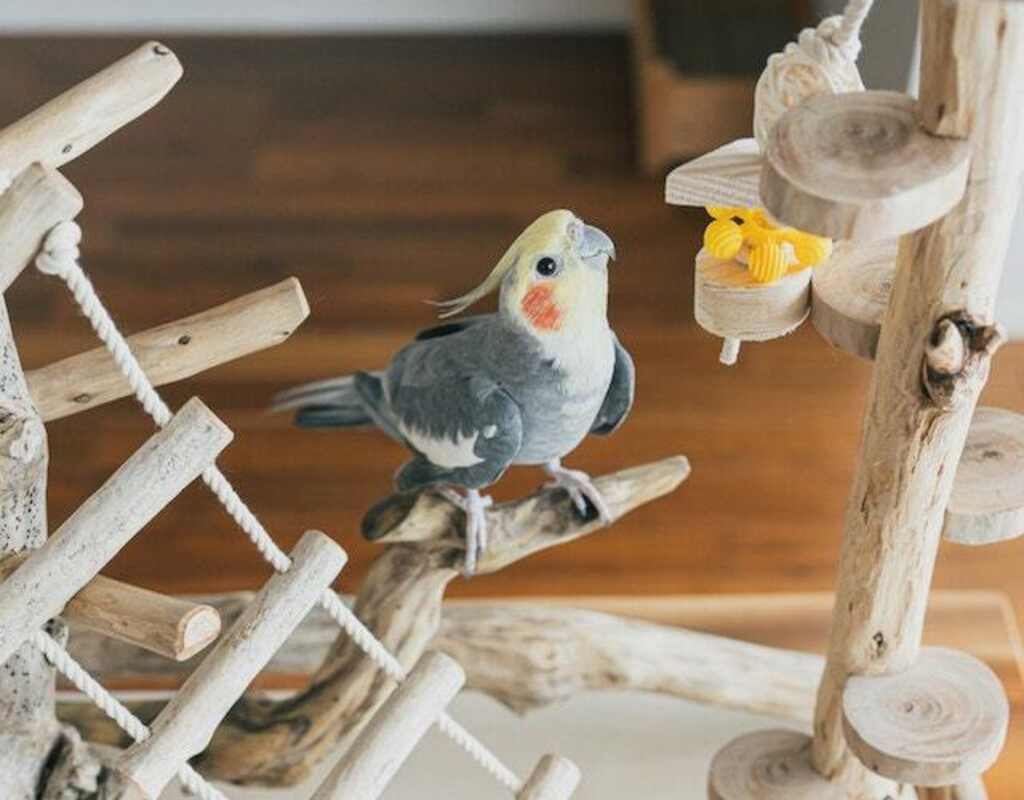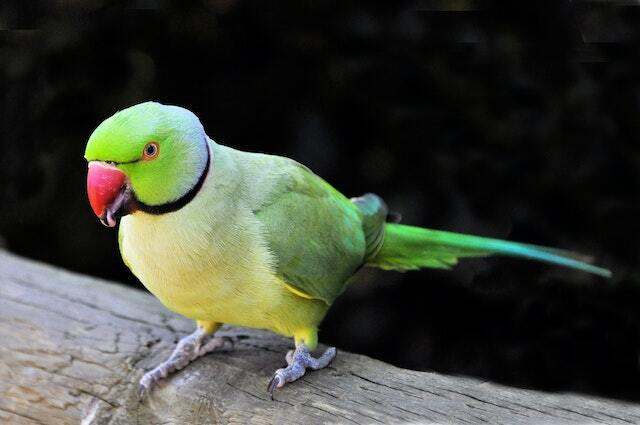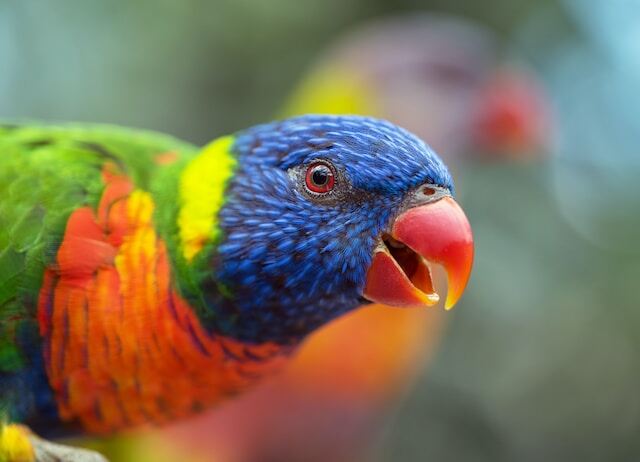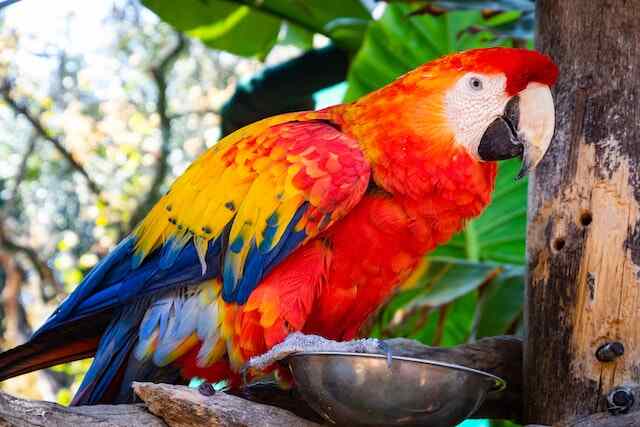“Why Do Birds Grind Their Beaks?” Bird enthusiasts have long pondered this question. Is it a sign of boredom? A way to sharpen their beaks? Or perhaps a secret bird language we’ve yet to decipher?
In this article, we’ll explore the short answer and dive deeper into the fascinating reasons behind this curious behavior. Get ready to discover the hidden world of beak-grinding birds!
Table of Contents
- 1 Definition of Beak Grinding
- 2 Importance of Beak Grinding for Birds
- 3 Purpose of the Article
- 4 Anatomy and Structure of a Bird’s Beak
- 5 Types of Beaks in Birds
- 6 Functions of a Bird’s Beak
- 7 Types of Birds That Grind Their Beaks
- 8 How to Identify Beak Grinding in Birds
- 9 Conclusion
- 10 FAQs: Why Do Birds Grind Their Beaks?
- 10.1 Why do birds grind their beaks?
- 10.2 Is beak grinding a sign of stress in birds?
- 10.3 Do all birds grind their beaks?
- 10.4 Can beak grinding damage a bird’s beak?
- 10.5 Is beak grinding related to nesting behavior?
- 10.6 Can beak grinding be a sign of a nutritional deficiency?
- 10.7 Can beak grinding be trained out of a bird?
- 10.8 Do male and female birds grind their beaks differently?
- 10.9 Is beak grinding a sign of affection in birds?
- 10.10 Does beak grinding behavior change with age?
- 11 Author
Definition of Beak Grinding
Beak grinding is an audible behavior observed in birds when they rub their upper and lower beaks back and forth against each other. The result is a distinctive rhythmic sound that can vary in duration and intensity depending on the species of bird.
Beak grinding can occur both during the day and at night when birds are resting or sleeping. This behavior has been observed in different species of birds, including parrots, finches, and raptors.
Importance of Beak Grinding for Birds
Beak grinding is not just a random behavior exhibited by birds; it serves several important functions necessary for their survival.
One critical function is maintaining the health of their beaks, which are essential tools for feeding, preening, and defending themselves from predators.
The constant rubbing action helps to sharpen the beaks while also removing any excess keratin buildup. Additionally, beak grinding can serve as a means of communication between birds.
In some cases, birds may grind their beaks as a sign of contentment or relaxation around others in their flock or as a way to signal mating readiness or territorial boundaries.
Purpose of the Article
The purpose of this article is to explore why birds grind their beaks by providing an overview of its function across different species, while highlighting its importance for avian health and survival.
Additionally, this article aims to identify specific types of birds prone to exhibiting this behavior while offering tips to identify and understand beak grinding in pet birds.
This article will suggest areas for further study to gain deeper insights into the meaning and significance of beak grinding behavior in birds.
Anatomy and Structure of a Bird’s Beak
The beak of a bird is made up of keratin, the same protein that makes up human hair and nails. The beak is an essential part of a bird’s anatomy, used for numerous activities such as catching prey, manipulating objects, grooming feathers, and building nests.
A bird’s beak is formed from two bony projections known as the maxilla and mandible. These bones support the keratinous sheath that covers the upper and lower portions of the beak.
The inside of a bird’s beak is filled with blood vessels and nerves to help with temperature regulation and sensitivity to touch.
The outer layer of a bird’s beak contains small openings where touch receptors are located. This helps birds feel what they are eating or holding in their beaks better.
Types of Beaks in Birds
There are many different types of beaks among birds, depending on their diet and lifestyle.
For example, raptors such as eagles have strong hooked bills that help them tear apart flesh, while seed-eating birds like finches have short conical bills for cracking open seeds.
Parrots have powerful hooked bills to crack nuts, while woodpeckers have chisel-like bills to excavate holes in trees.
Another type of bill belongs to the hummingbird, which has an elongated bill perfect for accessing nectar deep within flowers.
Some species have specialized tongues that can extend past their bill several times their body length to extract nectar from flowers.
Functions of a Bird’s Beak
A bird’s beak serves various functions depending on its structure; some common ones include feeding behavior, defense mechanisms, communication abilities, grooming habits, mating rituals, nest building requirements among others.
For instance:
– Feeding: A bird’s diet determines its type of bill, which in turn influences its feeding behavior.
A hummingbird’s long thin bill is perfect for collecting nectar from flowers, while a pelican’s long, straight beak helps them scoop up and hold fish
– Defense: Some birds use their beaks as weapons to protect their territories from predators or other birds.
Toucans use their large colorful bills to intimidate their rivals, while herons stab fish with their sharp pointed beaks.
– Communication: A bird’s beak also plays an essential role in communication.
Many birds use specific types of vocalizations along with posturing and bill movements to indicate aggression or submission.
– Nest Building: The structure of a bird’s bill is often adapted to help them build nests using materials like mud, sticks, grasses or twigs.
For instance, the spoonbill has a broad, flat bill that helps it sift through water for food and build nests made of mud.
Understanding the anatomy and function of a bird’s beak can provide useful insights into why some species exhibit certain behaviors such as grinding their beaks and how they adapt to different environments.
Why Do Birds Grind Their Beaks?
Natural Behavior in Birds
Beak grinding is a natural behavior that is observed in many species of birds. This behavior begins at a young age when they are still in the nest and continue throughout their life, becoming more frequent during adulthood.
Beak grinding is carried out by rubbing the beak against surfaces such as perches, toys, or even the bird’s own body.
Although it was once thought to be associated with sleep, many studies have demonstrated that birds grind their beaks at various times of the day and night.
Additionally, not all birds grind their beaks while sleeping. Some species may grind their beaks while awake, which suggests that it serves a purpose beyond relaxation or sleep.
Reasons for Beak Grinding
There are several reasons why birds grind their beaks. One reason is to sharpen their beaks.
The constant rubbing against hard surfaces helps wear down the tip of the beak, which tends to become overgrown if not worn down regularly.
This is particularly important for species that feed on seeds and nuts, as it allows them to crack open tough shells.
Another reason why birds grind their beaks is for relaxation and stress relief.
Just like humans who clench and unclench their fists or jaw when stressed or anxious, some bird species use this behavior as a coping mechanism during stressful situations.
Birds also use beak grinding as a means of communication with other birds.
It has been observed that some bird species use this behavior during courtship displays or to establish social hierarchies within flocks.
Maintaining hygiene is another reason why birds grind their beaks.
The rubbing motion helps remove dirt particles and other debris from the surface of the beak, promoting good hygiene practices that keep them healthy and disease-free.
There are several reasons why birds grind their beaks, including beak sharpening, relaxation and stress relief, communication with other birds, and maintaining hygiene.
Understanding the underlying reasons behind this behavior helps us appreciate the complex and fascinating lives of these creatures and provides valuable insights for pet owners, bird enthusiasts, and researchers alike.
Types of Birds That Grind Their Beaks
Birds inhabit diverse regions across the globe. Due to their unique physical and behavioral characteristics, they have been classified into different groups. Notably, among these groups are the birds that grind their beaks.
While beak grinding is a natural behavior in birds, it is not exhibited by all species. The following are some types of birds that are known for this behavior:
Parrots and Cockatoos
Parrots and Cockatoos are among the most popular pet birds in the world. These intelligent and social creatures exhibit many behaviors, one of which is beak grinding.
Parrots and Cockatoos grind their beaks for various reasons, such as sharpening it and relieving stress.
In captivity, these birds require mental stimulation to prevent boredom, which may lead to destructive behaviors such as feather plucking or self-mutilation.
Beak grinding is a sign that these pets may be happy, relaxed, or comfortable.
However, excessive beak grinding may indicate pain or discomfort in the bird’s mouth area; hence, it is crucial to consult an avian veterinarian if you notice any abnormal behavior in your pet bird.
Finches and Canaries
The finch family consists of small passerine birds that are widely distributed around the world. These birds have short triangular bills adapted for seed-eating diets.
Interestingly, Finches grind their beaks as part of their grooming behavior to maintain hygiene—removing dust particles or food debris from their bills.
Canaries are another type of small passerine bird known for their melodic songs and colorful feathers. They are social creatures that thrive on interaction with humans or other canaries.
Like finches who also belong to the same family (Fringillidae), canaries grind their beaks as a grooming behavior to keep their bills clean. Beak grinding is a good indicator of a healthy and happy bird.
Raptors and Owls
Raptors and Owls are birds of prey characterized by sharp claws, hooked beaks, and excellent vision. They are known for their hunting skills as they feed on small mammals, reptiles, insects, or fish.
These birds grind their beaks to sharpen it as part of the preparation process for hunting.
Beak grinding is also an essential behavior in raptors and owls when handling large prey items such as bones or feathers that may hinder them from swallowing their food successfully.
The grinding action helps them break down the food into smaller pieces that are easily digestible. Beak grinding is a natural behavior exhibited by various types of birds; however, it is not exclusive to all species.
While it can indicate happiness and relaxation in some cases, excessive beak grinding may indicate underlying health problems that require immediate attention from an avian veterinarian.
How to Identify Beak Grinding in Birds
Beak grinding is a natural behavior in birds that occurs for various reasons, such as relaxation, communication, or maintaining hygiene.
Understanding when and why birds grind their beaks can provide insight into their physical and mental well-being.
In this section, we will discuss some physical signs and behavioral cues that can help identify beak grinding in birds.
Physical Signs to Look Out For:
The first thing to look for is the sound of beak grinding. The sound can vary depending on the bird species but generally sounds like two rough surfaces rubbing against each other.
Second, observing the bird’s body posture is essential, since they may hunch forward slightly while grinding their beaks.
The bird may also close its eyes during the process or tilt its head slightly backward and forward.
Another physical sign to look out for is if the bird rubs its beak against perches or toys inside its cage while making grinding noises.
Birds may also use their beaks to scratch their necks or head before returning to grind them against any hard surface available.
Behavioral Cues To Watch Out For:
Beak grinding often occurs when a bird feels relaxed and calm; therefore, monitoring your pet’s behavior is crucial. Take note if your bird grinds its beaks at specific times of day or after performing certain tasks like eating or bathing.
Another behavioral cue that indicates a relaxed state in birds is panting; this may occur when birds are excited by something but are not stressed out about it.
Being aware of these physical signs and behavioral cues can help keep track of your pet’s well-being as well as understand what they need from you as an owner better.
Even though these behaviors are natural, understanding them can help identify potential health problems early on.
Conclusion
A Recap on the Importance of Understanding Why Birds Grind Their Beaks
Beak grinding is an essential natural behavior in birds that serves multiple purposes. From maintaining hygiene to communicating with other birds, beak grinding has significant implications for the health and wellbeing of birds.
As responsible pet owners or bird enthusiasts, it’s crucial to understand why birds grind their beaks and what it means for their physical and emotional health.
One of the key takeaways from this article is that beak grinding can serve as an indicator of a bird’s emotional state.
It’s important to pay attention to behavioral cues such as body language, vocalization, and frequency of beak grinding to ensure that your bird is happy and healthy.
Implications for Pet Owners, Bird Enthusiasts, and Researchers
For pet owners, understanding why their birds grind their beaks can help them provide adequate care and attention to their feathered friends.
By recognizing the reasons behind this natural behavior, pet owners can create a more stimulating environment that meets their bird’s physical, emotional, and social needs.
Bird enthusiasts can use this knowledge to better appreciate the beauty and complexity of birds’ behavior in the wild.
Understanding why different species grind their beaks can also help facilitate conservation efforts by providing insights into how different ecosystems function.
Researchers can use this information as a basis for further studies on avian behavior.
Future research could explore how different factors such as diet or habitat affect beak grinding patterns in different species, or delve into the complex neural mechanisms underlying this behavior.
A Bright Future Ahead
As we continue to learn more about avian physiology and behavior through research studies like these, we gain a deeper appreciation for these fascinating creatures’ complexity.
While there is still much we don’t know about avian behavior or biology in general, this knowledge offers a glimpse into the many ways that birds continue to surprise and delight us.
So let’s celebrate the beak-grinding behaviors and other quirks that make our feathered friends so special!
FAQs: Why Do Birds Grind Their Beaks?
Why do birds grind their beaks?
Birds grind their beaks for a variety of reasons, including to keep them sharp, to clean them, and to stretch their jaw muscles.
Is beak grinding a sign of stress in birds?
Beak grinding can be a sign of relaxation and contentment in some birds, but it can also be a sign of stress or illness in others. It’s important to observe other behaviors and consult a veterinarian if you’re concerned.
Do all birds grind their beaks?
No, not all birds grind their beaks. It’s most commonly observed in parrots, pigeons, and doves.
Can beak grinding damage a bird’s beak?
Excessive beak grinding can potentially cause damage to a bird’s beak, but it’s usually not a concern unless it’s accompanied by other symptoms.
Some birds may grind their beaks as part of their nesting behavior, but it’s not a universal behavior and varies among species.
Can beak grinding be a sign of a nutritional deficiency?
Beak grinding is not typically a sign of a nutritional deficiency, but it’s important to ensure that your bird is receiving a balanced diet.
Can beak grinding be trained out of a bird?
Beak grinding is a natural behavior and cannot be trained out of a bird. It’s important to understand and respect your bird’s natural behaviors and needs.
Do male and female birds grind their beaks differently?
There is no evidence to suggest that male and female birds grind their beaks differently.
Is beak grinding a sign of affection in birds?
Beak grinding can be a sign of affection in some birds, particularly parrots, but it can also be a sign of relaxation or other emotions.
Does beak grinding behavior change with age?
Beak grinding behavior can change with age, but it varies among species and individuals. Some birds may grind their beaks more or less frequently as they age.







